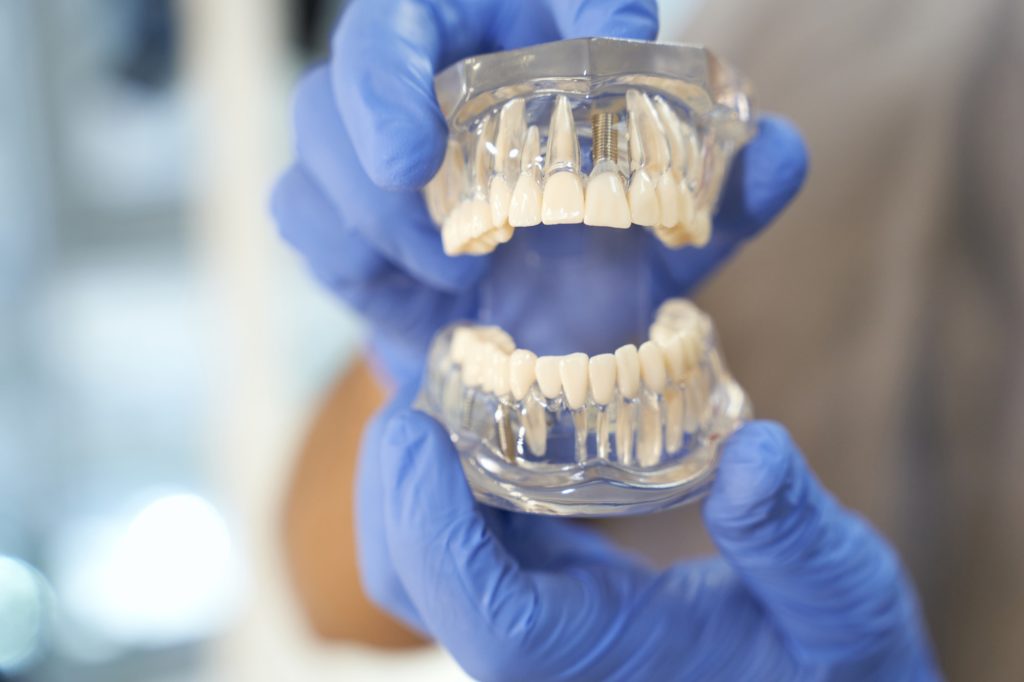Malocclusion (Misaligned Bite)

Learn what it means to have a Malocclusion and the various types and classification of malocclusion you may be dealing with.
Table of Contents
Malocclusion is a big word for a misalignment of your jaw and teeth that can be uncomfortable, cause you some self-consciousness, and even pain. The good news is, if you’re suffering from Malocclusion, we have the solutions and the explanation for what is going on.
What is Malocclusion?
In the simplest form, malocclusion is a misaligned bite. This is when your teeth and your jaw are not lined up naturally. The misalignment causes stress on your mouth and any mouth movement will be more difficult and it could be challenging to do basic activities such as eating and speaking comfortably. There is no need to worry as malocclusions are treatable and there are different options based on the type of malocclusion you have been diagnosed with.
What are the Classes of Malocclusions?
1. Class 3 Malocclusion
So let’s talk about class three malocclusion. This is when your lower teeth are sticking out past the upper teeth, creating a severe underbite. In some cases, it can result in a crossbite that can have a series of overlapping upper and lower teeth. This malocclusion has 3 different types within its class.
Type I: Your teeth alignment is good, but your arch shape is abnormal.
Type II: Your teeth alignment is fine, but your lower front teeth have a lean in the direction of your tongue.
Type III: Your upper arch is underdeveloped. Your lower teeth alignment is good, but your upper front teeth have a lean in the direction of your tongue.
2. Class 2 Malocclusion
A Class two malocclusion is similar to class III but is flip-flopped. Class II is when your upper teeth stick out over the lower teeth, affecting your bite alignment, and creating an overbite. This is one of the more severe types, so orthodontic help will be recommended. Though it may take longer to fix the bite to a more natural state, you’re still able to get everything fixed up with the right appliances and approach to treatment.
3. Class 1 Malocclusion
Lastly, Class one malocclusion is where your upper teeth stick out over the lower teeth, (usually called an overlap), but the bite is pretty normal. There are a bunch of reasons why the upper teeth could overlap. Mainly from prolonged thumb-sucking or bottle use in childhood. Having an overlap could require you to get minor corrections with orthodontic appliances. Let’s look at the three types of Class I.
Type I: Your teeth are angled toward the tongue.
Type II: Having narrow arches with the upper teeth sticking out, whilst the lower teeth are leaning in toward the tongue.
Type III: Your upper front teeth are angled toward your tongue and crowding is present.
Whether your malocclusion is a class one, two, or three or type I, II, or III within those classifications, the good news is there’s always a fix. With the right corrections, your smile will be better than ever. Make sure to see your dentist and see what’s right for you and your smile.
Malocclusion FAQs
Malocclusion, or misalignment of the teeth and/or jaws, can result from genetic and environmental factors. Genetics plays a significant role, as it can be inherited from parents or you can have a predisposition to it. Additional factors can affect how the teeth and jaws develop, such as habits like thumb-sucking, prolonged pacifier use, tongue thrusting, or mouth breathing.
Factors such as early tooth loss, dental trauma, and poor orthodontic care can also contribute to malocclusion. Overall, it’s a complex condition with multiple potential causes.
Symptoms of malocclusion can vary depending on its severity. Still, they may include misaligned teeth, difficulty chewing or biting, speech problems, jaw pain or discomfort, teeth grinding (bruxism), and, in some cases, aesthetic concerns.
Mild cases may exhibit fewer noticeable symptoms, while severe cases can lead to more pronounced issues, including facial asymmetry and an increased risk of dental problems like cavities and gum disease due to difficulty maintaining proper oral hygiene. Regular dental check-ups can help identify and address it early on.
Malocclusion is typically diagnosed through a combination of clinical assessment and dental imaging. A dentist or orthodontist will begin by conducting a thorough examination of the patient’s teeth, jaws, and bite. They may use tools like dental mirrors, bite records, and dental casts to evaluate the alignment and occlusion. X-rays, cephalometric radiographs, or 3D imaging scans like CBCT (Cone Beam Computed Tomography) may also be employed to get a more detailed view of the teeth and jaw structures.
This comprehensive assessment helps determine the type and severity, enabling the development of an appropriate treatment plan, including orthodontic braces, aligners, or other corrective measures.
The treatment for malocclusion depends on its type and severity. Common approaches include orthodontic treatment with braces, aligners, or retainers, which gradually move the teeth into their correct positions. In more severe cases or when issues with the jaw are involved, orthognathic surgery might be necessary to reposition the upper or lower jaw. Additionally, dental procedures such as tooth extraction, dental crowns, or veneers may be used to correct specific misalignment issues.
Early intervention, often during adolescence when the bones are still growing, can yield more effective results. Treatment plans are tailored to individual needs, and a consultation with an orthodontist or dentist is crucial to determine the most suitable approach for addressing it.
